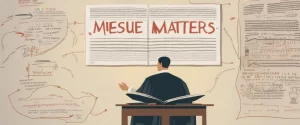
In the vast realm of literature, certain works have braved the test of time, captivating readers across generations with their intricate narratives and profound insights into the human condition. Among such esteemed literary icons, Charles Dickens’ “Oliver Twist” and Leo Tolstoy’s “War and Peace” stand as towering masterpieces, revered for their profound storytelling and their striking reflection of the social and historical landscapes of their respective eras. As their titles might suggest, these two novels could not be more divergent in their subject matter – one delving into the struggles and hardships faced by a young orphan in the merciless streets of Victorian London, while the other immerses readers into the turbulent backdrop of Napoleonic wars, Russian aristocracy, and the profound philosophical contemplations that define human existence. However, what binds these two novels together is their shared exploration of the complexities of human nature, with each author deftly weaving themes of social inequality, morality, love, and personal growth into their narratives. It is precisely this intersectionality of themes and the unique approaches employed by Dickens and Tolstoy that fuel the desire to undertake a comparative study of these two enduring classics, in order to better grasp the underlying similarities and differences that transcend time and cultural boundaries. By examining the distinct literary techniques, character development, and thematic explorations of “Oliver Twist” and “War and Peace,” this study aims to shed light on how two seemingly disparate works manage to resonate with readers and maintain their relevance, long after they were first penned.
Brief Summary of Two Books
Oliver Twist by Charles Dickens
Oliver Twist by Charles Dickens is a classic novel published in 1838. The story revolves around the titular character, Oliver Twist, an orphan boy who faces hardships and injustices in his quest for a better life.
Oliver is born in a workhouse and spends his early years as a neglected and mistreated orphan living in poverty. His life takes a turn when he bravely asks for more food during a meal, which leads to his expulsion from the workhouse. Mr. Bumble, the cruel beadle, takes Oliver to the Sowerberries, an undertaker and his family, where he faces more mistreatment.
Oliver’s difficult journey continues as he runs away from the Sowerberries and eventually ends up in the notorious criminal underworld of London. There, he encounters a gang of young thieves led by the cunning Fagin and his brutal associate, Bill Sikes. Despite being forced into a life of crime, Oliver remains fundamentally good-hearted and resists fully embracing a criminal lifestyle.
Through various encounters and adventures, Oliver encounters people who show him kindness, including Nancy, a prostitute, and the Maylies, a wealthy family who take him in. However, his association with Fagin and the thieves threatens his chance at a new life.
As the story unfolds, Oliver’s true identity, family background, and the machinations of those who wish him harm are revealed. Oliver must navigate treacherous situations and overcome the cruel intentions of those who wish to exploit him. Eventually, he triumphs over adversity and finds happiness, while the villains in the story face their comeuppance.
Oliver Twist delves into social issues of poverty, crime, and the corrupting influence of society on the innocent. It examines themes of morality, redemption, and the search for identity. The novel paints a vivid and gritty picture of Victorian London, highlighting both the beauty and the darkness of the city. Oliver Twist remains a timeless classic, reflecting on the struggles of the marginalized and the power of compassion and resilience.
War and Peace by Leo Tolstoy
War and Peace, written by Leo Tolstoy, is a monumental novel set in the early 19th century, during Napoleon’s invasion of Russia. The story primarily revolves around the lives and relationships of several aristocratic families, exploring their personal ambitions, passions, and struggles.
The novel begins in 1805, as Napoleon Bonaparte’s army approaches Russia. We are introduced to the four main families: the Bolkonskys, the Rostovs, the Bezukhovs, and the Kuragins. Count Pierre Bezukhov is the illegitimate son of a wealthy nobleman, who unexpectedly inherits his father’s fortune. Prince Andrei Bolkonsky, a well-respected military officer, is married to the vain and selfish Lise. Their stories intertwine with those of Natasha Rostova, an impulsive and vibrant young girl, and her family. Natasha eventually becomes engaged to Prince Andrei against her family’s wishes.
As France invades Russia, the characters are confronted with the realities of war. Prince Andrei is gravely wounded at the Battle of Austerlitz and experiences a profound spiritual transformation. Pierre, disillusioned by his extravagant lifestyle, engages in philosophical and social reform pursuits. Natasha, meanwhile, falls in love with Anatole Kuragin, a deceitful and manipulative nobleman, leading to multiple scandals and heartbreak.
Throughout the novel, Tolstoy provides insightful commentary on war, history, fate, and the nature of human existence. He explores themes of love, redemption, and self-discovery against the backdrop of the Napoleonic Wars. The lives of the characters are deeply affected by historical events, and their personal struggles reflect on the broader human experience.
War and Peace is a sprawling epic that delves into the complexities of human nature, the impact of historical events, and the search for meaning in life. With its richly developed characters and philosophical reflections, the novel stands as one of the greatest works of literature, exploring the depths of human experience within the context of war and peace.
Comparison between Two Books

Similarities in historical fiction
Oliver Twist by Charles Dickens and War and Peace by Leo Tolstoy may seem like vastly different novels at first glance, with the former portraying the gritty reality of life in 19th-century London and the latter delving into the complexities of Russian society during the Napoleonic Wars. However, both novels share certain similarities when it comes to their historical fiction elements. Here, we will explore these commonalities in detail:
1. Historical Settings: Both Oliver Twist and War and Peace are set in distinct historical periods that greatly influence the narrative. Oliver Twist is set in the harsh realities of early 19th-century industrial England, highlighting the urban poverty, crime, and social injustices of the time. War and Peace, on the other hand, takes place during the early 19th century against the backdrop of Napoleon Bonaparte’s invasion of Russia, and utilizes detailed historical events to shape its storyline.
2. Social Commentary: Both novels provide insightful social commentary on the societies they portray. Dickens’s Oliver Twist criticizes the harsh treatment of orphans and the exploitative nature of workhouses and street life, shedding light on issues of poverty, child labor, and corruption. Similarly, Tolstoy’s War and Peace reflects on the sweeping social changes caused by war, the effects of aristocratic rule, and the struggles faced by various social classes, particularly in Russian society.
3. Complex Character Development: Both novels excel in creating complex and memorable characters that navigate their historical milieu. Oliver Twist introduces us to a range of characters, from the lovable orphan Oliver himself to the conniving Fagin and the sympathetic Nancy, each representing different facets of Victorian society. Similarly, War and Peace presents a vast array of characters from various social backgrounds, showcasing their multifaceted personalities and how they adapt to a changing world torn apart by conflict.
4. Realistic Portrayal of Historical Events: Both novels incorporate real historical events into their narratives, adding an element of authenticity to the stories. Oliver Twist includes references to significant historical occurrences such as the 1832 Reform Act and the riots of the same year, while War and Peace integrates vast historical events like the Battle of Borodino and the French invasion, portraying the impact of these events on the lives of its characters.
5. Themes of Human Struggles: Despite their historical settings, both novels delve into universal themes of human struggles that transcend time. Oliver Twist explores themes of poverty, morality, and the search for identity and belonging, while War and Peace grapples with themes of love, death, existentialism, and the futility of war. These themes resonate with readers across different eras, making the novels enduring pieces of historical fiction.
In summary, although Oliver Twist and War and Peace take place in different historical and geographical contexts, they share significant similarities in terms of their historical fiction elements. Both novels offer social commentary, complex character development, realistic portrayal of historical events, and explore timeless themes of human struggles. Together, they showcase the power of historical fiction to transport readers to different eras while shedding light on the timeless aspects of the human experience.
Divergences in historical fiction
Oliver Twist by Charles Dickens and War and Peace by Leo Tolstoy are both acclaimed literary works, but they differ significantly in terms of narrative style, themes, and their treatment of historical events. While both novels fall under the category of historical fiction, they diverge greatly in their approach to this genre.
One notable divergence lies in their narrative structures. Oliver Twist follows a linear plotline and focuses on one protagonist’s struggles within the context of Victorian England. Dickens delves into the lives of various characters, providing a detailed exploration of their social conditions during this historical period. On the other hand, War and Peace takes a sprawling approach, featuring multiple storylines that intersect and diverge throughout. Tolstoy offers a panoramic view of Russian society during the early 19th century, exploring the intertwining lives of aristocrats, soldiers, and peasants.
Moreover, their themes exhibit clear divergences. Oliver Twist explores the harsh realities of poverty, crime, and child exploitation, emphasizing the corruption within the social hierarchy of Victorian London. It serves as a social commentary, shedding light on the dehumanizing effects of poverty and the need for compassion and social reform. In contrast, War and Peace delves into themes of war, love, and the human condition. Tolstoy delves deeply into the philosophical aspects of life, discussing questions of free will, historical determinism, and the nature of war itself.
In terms of historical events, Oliver Twist portrays a more localized and specific context – the underbelly of 19th-century London. Although Dickens references broader historical events such as the Poor Laws and the French Revolution, they are not the main focus of the story. In contrast, War and Peace offers a sweeping historical backdrop, incorporating major events such as the Napoleonic Wars and the French invasion of Russia. Tolstoy provides detailed historical accounts and explores the impact of these events on the lives of his characters, often offering critical analysis of war and its consequences.
While both novels fall under the historical fiction genre, Oliver Twist and War and Peace approach the concept in distinct ways. Dickens primarily uses historical context as a backdrop to shed light on societal issues, while Tolstoy employs it as a means to explore broader philosophical and historical themes. Ultimately, these divergences make them unique and significant contributions to the genre of historical fiction.

Conclusion
Both “Oliver Twist” by Charles Dickens and “War and Peace” by Leo Tolstoy are considered classic works of literature and have their own merits.
“Oliver Twist” is a gripping tale of a young orphan’s journey through poverty and crime in 19th century London. Dickens highlights social injustices and explores themes of class division, morality, and redemption. The novel’s vivid characters and intricate plot make it an engaging read for those interested in social commentary and the human condition.
On the other hand, “War and Peace” is a massive epic that delves into the lives of several characters during the Napoleonic Wars. Tolstoy explores the complexities of human nature, love, war, and destiny in this profound work. It offers a deep exploration of the human psyche and provides insights into historical events and society.
Ultimately, choosing which book is more worthy of reading depends on personal preference and interests. Both novels are significant contributions to literature, but they tackle different themes and writing styles. If you prefer a more focused story with a strong social commentary, “Oliver Twist” may be the better choice. However, if you are looking for a broader exploration of humanity and are willing to delve into a lengthy, complex work, “War and Peace” would be worth considering.


